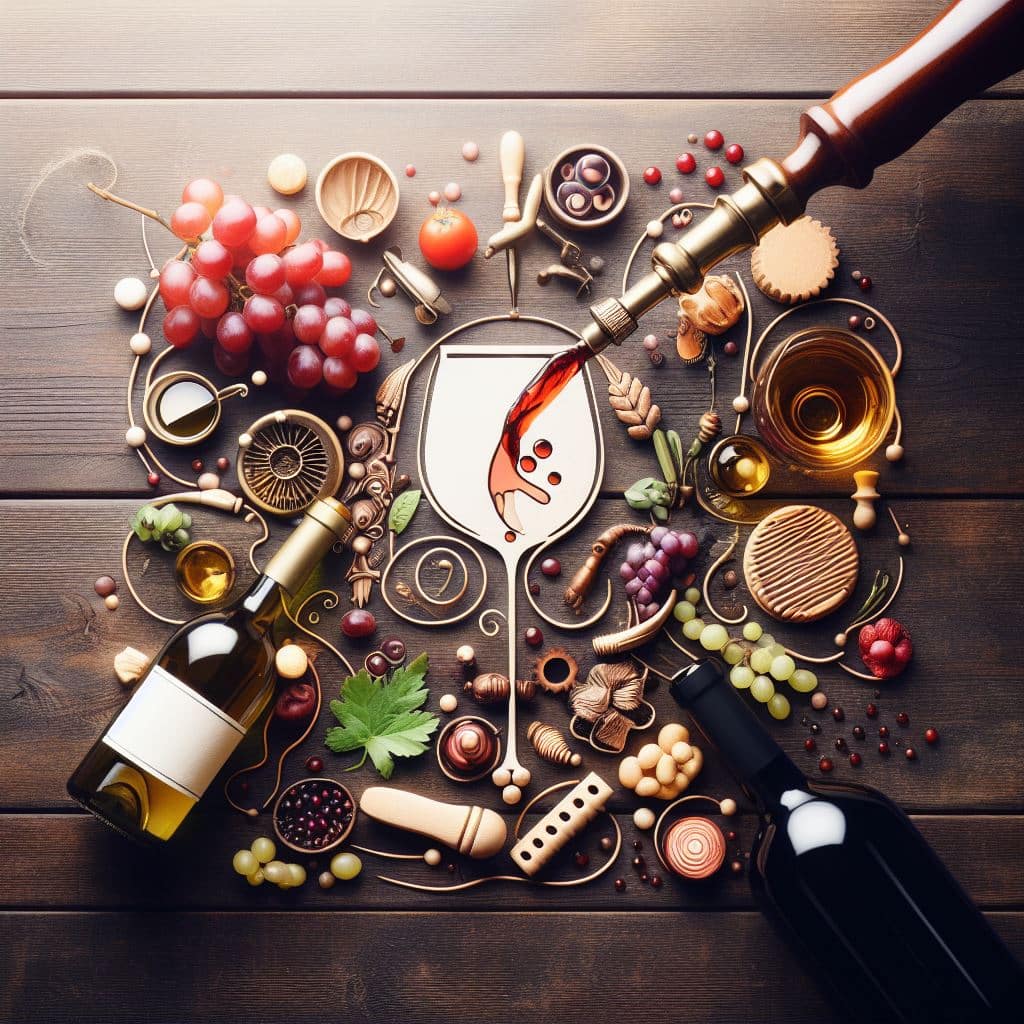**Grape Expectations: The Art of Wine Tasting – A Sensory Expedition**
Hello to all the budding sommeliers and spirited aficionados! Ever wondered how experts discern raspberry notes from cherry, or how they can tell the difference between oak and cedar just from a sniff? At Grape Expectations, we believe that tasting wine and spirits is not just a drink, but an adventure. Today, let’s embark on a sensory journey to unlock the art of wine tasting.
### 🍇 **1. Setting the Stage**
Before you sip, ensure you’re giving the wine the spotlight. Use a clear, stemmed glass to fully observe the wine’s color and clarity. Make sure the wine is at the right temperature: chilled for whites and room temp for reds. This will help the wine express its true character.
### 🌬️ **2. Swirl, Sniff, and Savor**
* **Swirl**: By swirling the wine in your glass, you allow oxygen to mix with it, releasing its aromas. This action also gives you a glimpse into the wine’s body. A wine that leaves “legs” or “tears” on the side of the glass generally has higher alcohol or sugar content.
* **Sniff**: Dip your nose into the glass and inhale deeply. Try to identify familiar scents. Is it fruity like berries or citrus? Earthy like a forest after rain? Or spicy like vanilla or pepper?
* **Savor**: Take a sip but don’t swallow immediately. Let the wine dance on your palate. Is it light or full-bodied? How’s the balance between acidity, sweetness, and bitterness? Can you identify flavors that mirror the aromas?
### 🌍 **3. Geography Lesson**
Wines and spirits absorb the essence of the place they come from. A mineral note might indicate a rocky vineyard, while a grassy aroma might hint at a cooler climate. As you taste, ask yourself if you can paint a picture of the wine’s homeland.
### 🎨 **4. Texture Tales**
Texture in wine – also referred to as mouthfeel – is a tactile impression, ranging from watery to creamy, silky to gritty. Tannins, often found in red wines, can feel like a drying sensation on your gums. Wines with good acidity might feel crisp, almost like biting into a fresh apple.
### 🕰️ **5. The Finish**
After swallowing, notice the aftertaste or the finish. A lingering finish is often a sign of a quality wine. Does the taste evolve? Does it stay with you, inviting you for another sip?
### 🍹 **Bonus: Spirits 101**
When tasting spirits, the process is slightly different due to the higher alcohol content.
* **Dilute**: Especially for cask-strength spirits, add a drop or two of water. This will open up the spirit’s aroma and flavors.
* **Sniff Carefully**: Spirits are potent. Take gentle sniffs to avoid overwhelming your nose.
* **Small Sips**: Spirits are meant to be sipped slowly. Savor the complexity they bring.
### 📝 **Conclusion: Practice Makes Perfect**
Remember, the art of wine and spirits tasting is subjective. It’s about training your palate and nose, but it’s also about personal preference. The more you taste, the better you’ll get at identifying nuances. Start with the basics and soon, you’ll be on your way to becoming a true connoisseur.
Join us next time at Grape Expectations for another delightful dive into the world of wines and spirits. Until then, raise your glasses and toast to the art of tasting! 🍷🥂🥃


